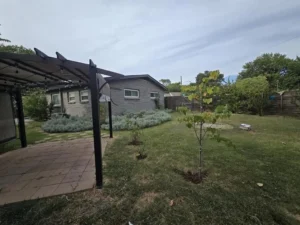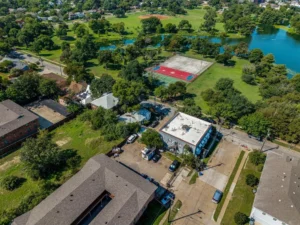Introduction to Dallas Living Expenses and Affordability
Understanding the expense and affordability of living in Dallas is crucial for those considering relocation or job opportunities in the city. Dallas Living Expenses are relatively lower compared to national averages. This makes it an attractive option for those seeking affordable living arrangements. Factors such as housing costs and average salaries significantly shape the overall affordability of Dallas. The cost of living in Dallas is influenced by economic factors and regional price variations. These factors impact residents’ daily expenses and quality of life.
For example, housing costs in Dallas have steadily increased. The median home price is around $300,000. This upward trend in housing expenses can directly impact residents’ budgets and financial planning. It underscores the need to assess affordability comprehensively. However, despite these rising housing costs, other aspects such as utilities and transportation remain relatively affordable. This contributes to the city’s overall cost of living index.
Dallas Living Expenses Overview
In Dallas, the cost of living is about 8% lower than the national average. This makes it appealing for those seeking affordability. This advantage in the cost of living index positions Dallas favorably among other major U.S. cities. Housing costs, a major component of living expenses, have continuously grown in Dallas. This growth reflects the city’s economic development and population influx. Understanding these cost dynamics is essential for residents to make informed financial decisions and maintain a sustainable lifestyle.
For instance, the cost of living in Dallas plays a crucial role in decision-making when relocating or searching for jobs. By offering a more affordable living environment than many other metropolitan areas, Dallas becomes attractive for those seeking a balance between quality of life and financial stability. This affordability influences daily expenditures and shapes long-term financial planning and savings goals.
Dustin Pitts: Your Dallas Realtor
Dustin Pitts is a highly experienced realtor in Dallas who specializes in helping individuals and households find their perfect home. With an in-depth knowledge of Dallas Living Expenses and housing market trends, Dustin provides valuable insights to clients looking to relocate to the city. His expertise covers a wide range of properties, from affordable starter homes to luxurious estates, ensuring that every client’s needs and budget are met.
Moreover, Dustin’s commitment to client satisfaction is evident in his personalized approach. He takes the time to understand each client’s unique requirements and financial situation, guiding them through the complexities of the Dallas real estate market. By leveraging his extensive network and market knowledge, Dustin helps clients make informed decisions that align with their long-term financial goals. Whether you’re a first-time homebuyer or looking to upgrade, Dustin Pitts is your go-to expert for navigating Dallas’s dynamic housing landscape.
Factors Impacting Dallas Living Expenses
The cost of living in Dallas is influenced by various factors beyond basic expenses. For instance, moderate inflation rates in the region affect the prices of goods and services. This impacts residents’ purchasing power and budgeting decisions. Thus, individuals in Dallas must consider inflation when planning expenses and savings to ensure long-term financial stability.
Moreover, affordable healthcare options significantly contribute to the overall cost of living. Access to quality healthcare services at reasonable costs can reduce the financial burden on residents. This makes it easier to manage medical expenses without compromising their standard of living. For example, affordable health insurance plans and medical facilities allow individuals to prioritize well-being without facing high healthcare costs. This ultimately enhances the city’s overall affordability and quality of life.
Furthermore, the diverse job market in Dallas plays a crucial role in shaping the city’s affordability. With opportunities in various industries such as technology, finance, healthcare, and education, residents have access to a wide range of employment options with competitive salaries. This diversity boosts the average annual income in Dallas. It also provides individuals with the chance to explore career paths that align with their financial goals. As a result, job market dynamics contribute to the city’s overall affordability by offering residents the means to support their living expenses while pursuing professional growth.
Average Salary and Dallas Living Expenses
The average annual salary in Dallas plays a crucial role in determining the city’s overall affordability. With an average income of around $60,000, residents can comfortably support their living expenses. For example, individuals in the technology and finance sectors often benefit from competitive salaries. These high salaries enhance their quality of life and contribute to Dallas’s reputation as a hub for professionals seeking financial stability and career growth.
Moreover, the correlation between salary levels and the cost of living significantly influences relocation decisions. By understanding how their income aligns with living expenses in Dallas, individuals can make informed choices about their financial future and lifestyle. This knowledge helps assess whether their salaries provide the necessary financial security to cover housing, utilities, transportation, and healthcare. This ensures a balanced and manageable budget. Ultimately, the average salary in Dallas reflects the city’s economic landscape and impacts residents’ ability to lead fulfilling lives while managing living costs effectively.
Importance of Dallas Living Expenses Analysis
Understanding affordability in Dallas goes beyond just examining the cost of living. It delves into the balance between expenses and income to determine if maintaining a certain lifestyle is feasible. For instance, when looking at housing costs in Dallas, the analysis considers both average home prices and the percentage of income spent on mortgage payments or rent. This approach helps individuals understand how much of their earnings go to housing, aiding better financial planning.
Moreover, affordability analysis in Dallas is not static; it evolves based on economic conditions and individual circumstances. For example, during periods of economic growth where salaries might increase, the analysis adapts to reflect the changing landscape of affordability. By incorporating these dynamic elements, residents can adjust their budgets and savings targets to align with the shifting cost of living, ensuring long-term financial well-being.
Furthermore, the affordability constraints set by Dallas communities serve as practical benchmarks for individuals to gauge their financial health and make informed spending choices. These constraints act as guardrails, preventing residents from overspending or neglecting crucial savings. By adhering to these guidelines, individuals can balance their daily expenses, savings goals, and long-term financial security, fostering a sustainable financial outlook in Dallas.
Conclusion on Dallas Expense and Affordability
In summary, Dallas provides a balance between affordability and quality of life. This makes it an attractive option for those seeking cost-effective living. The city’s 8% lower cost of living compared to the national average is a key factor. It draws individuals looking to manage expenses without compromising on lifestyle. For instance, the median home price in Dallas is around $300,000. This is lower than in many other major U.S. cities, making homeownership more feasible.
Moreover, financial planning and budgeting are crucial for navigating the cost of living in Dallas. By understanding their income, expenses, and savings goals, residents can make informed decisions. For example, allocating 50% of income to necessities, 30% to wants, and 20% to savings and debt repayment, as suggested by experts, helps manage finances efficiently. This approach allows residents to prioritize spending, save for emergencies and retirement, and repay debt. Ultimately, this contributes to their overall financial well-being and quality of life in Dallas.



















